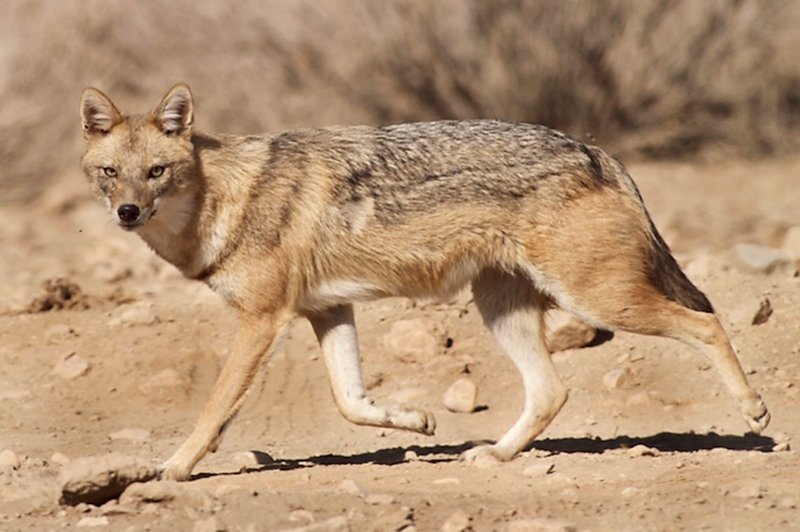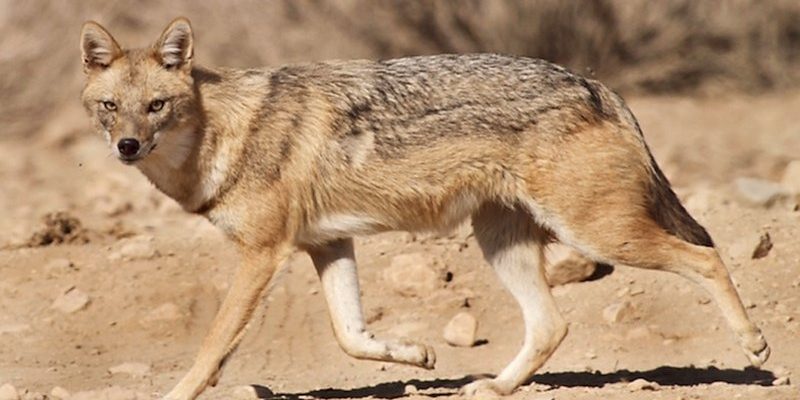
Imagine sipping coffee while chatting about these animals. You might recognize that jackals have lean bodies, pointed ears, and fox-like faces. But did you know there are other animals that share these characteristics? Let me guide you through a lineup of ten furry friends that could make you do a double-take when you spot them in the wild. Along the way, I’ll help you distinguish between them so you won’t confuse one for another.
1. Coyotes
Coyotes are probably one of the most recognizable relatives of the jackal. Found mostly in North America, these cunning creatures have a similar size and shape. They are lean, with long legs and bushy tails, just like jackals. You might’ve heard them howling at night, and that’s one big clue to help tell them apart.
The key difference is in their fur. While jackals typically have a yellowish-brown coat, coyotes often sport a mix of gray, brown, and even reddish hues. Plus, you’ll notice their howl sounds more elongated and drawn out compared to the jackal’s yappy bark. It’s a bit like the difference between a quick text message and a long-winded voicemail.
2. Wolves
Next on our list are wolves, another member of the canine family. Wolves are generally larger and more powerful than jackals. They have broader faces and heavier builds. Think of a jackal as the sprightly cousin and a wolf as the burly older sibling.
Despite these differences, it’s easy to get confused at a glance. Wolves can also have a variety of fur colors, ranging from gray to black and even white. However, you’ll notice that wolves have a more majestic appearance, which is largely due to their size. When you see them in their packs, they display a coordinated behavior that jackals typically don’t exhibit.
3. Foxes
Foxes, particularly the red fox and the gray fox, can often be mistaken for jackals due to their pointed snouts and large ears. But here’s where it gets interesting: foxes are usually smaller and fluffier. Think of them as the cute, playful relatives who always bring the fun to family gatherings.
The coloration can also help you tell them apart. Red foxes have a striking orange-red coat, while gray foxes sport a more muted gray. You might also notice that foxes prefer solitary or small family units, unlike jackals that often operate in larger groups.
4. Dhole
Now, let’s talk about the dhole, also known as the Asiatic wild dog. These animals share sharp features with jackals, like slender bodies and bushy tails. However, dholes are usually more robust and have a unique reddish-brown coat that sets them apart.
If you spot a dhole in the wild, you’ll quickly notice their pack behavior, which is quite social. They hunt in larger groups, reminiscent of wolves but with a different flair. They also have a more playful demeanor, often engaging in games with their pack members, which can be quite charming to observe.
5. African Wild Dog
The African wild dog is another fascinating cousin of the jackal. These dogs are known for their striking multi-colored fur and large, rounded ears. With a more slender frame than a wolf but a bulkier build than a jackal, they’re like the cool cousin who stands out in a crowd.
What sets them apart is their social structure. African wild dogs live in packs of up to 20 members and are known for their cooperative hunting techniques. They communicate well with each other, making them a joy to watch when they’re on the hunt. You might notice that their vocalizations are much more varied than jackals, adding to their appeal.
6. Maned Wolf
The maned wolf is a fun character in the canine family. Taller than a jackal, this unique creature stands on long, spindly legs. It has a distinct reddish-brown fur, and its large ears give it a look all its own. If jackals are the quick and sneaky types, maned wolves have a more graceful, elongated look that sets them apart.
You’ll also find that maned wolves have a unique diet. Unlike jackals, which are opportunistic feeders, maned wolves primarily eat fruits, tubers, and small animals. Their howl is often described as a “yip,” which adds a quirky twist to their personality.
7. Raccoon Dog
Raccoon dogs might just surprise you. These animals resemble raccoons more than jackals at first glance, but they are part of the canine family! Found in East Asia, they have a stocky build and thick fur, giving them a cuddly appearance. The key difference is in their facial features, which are more rounded and mask-like compared to the jackal’s sleek face.
What’s really interesting about raccoon dogs is their behavior. They are known for being quite solitary and can climb trees, unlike jackals. If you see one scampering around, you’ll know you’re looking at a raccoon dog based on its distinctive bushy tail and more playful antics.
8. Scottie Dog
You might be wondering why I’m mentioning the Scottie dog, but stay with me! While they’re not wild animals, these adorable pets have some physical resemblance to jackals. They are small with short legs and long bodies, presenting a different but charming appearance.
Scotties have a distinctive beard and eyebrows, which add to their cute factor. However, unlike jackals that roam freely in the wild, Scotties are loyal companions, often getting into various shenanigans with their families. They show that the canine family comes in all shapes and sizes, each with its own unique traits.
9. Coyote-Wolf Hybrid
When you mix a coyote and a wolf, you get a creature that can sometimes be confused with a jackal. These hybrids can vary in appearance, but they often share the coyote’s slenderness and the wolf’s bulk. It’s like blending two family recipes to create a unique dish that has elements of both.
Their coloring can also be a mix of both parents. You might see everything from gray to tawny shades. The trick with these hybrids is to look for traits like larger ears or a more elongated body, which can sometimes give away their lineage.
10. Tundra Wolf
Last but not least, we have the tundra wolf. Found in the frigid parts of the Arctic, these wolves are larger than jackals and have thicker fur to withstand the cold. Their faces are broader, and they typically have more pronounced features, which makes for easy identification.
Tundra wolves are social creatures, living in packs and hunting for prey like caribou. Unlike the more solitary jackal, tundra wolves work together, showcasing teamwork and strategy that can be quite impressive.
In closing, understanding these ten animals similar to the jackal can deepen your appreciation for nature’s diversity. Each has its own quirks and characteristics, making them special in their own rights. Whether you’re observing a clever coyote or a majestic wolf, there’s always something new to learn in the world of animals. So, next time you’re out exploring, keep an eye out for these fascinating creatures, and you’ll know just how to tell them apart!

